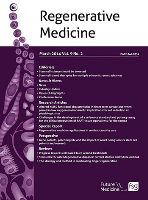
Regenerative Medicine
Scope & Guideline
Pioneering Discoveries in Biomedical Regeneration
Introduction
Aims and Scopes
- Cellular and Molecular Mechanisms of Regeneration:
Research in this area investigates the cellular processes and molecular pathways that facilitate regeneration, including stem cell biology, signaling pathways, and gene expression. - Tissue Engineering and Biomaterials:
This scope encompasses the development and application of biomaterials and scaffolds designed to support tissue regeneration and repair, often integrating biological components to enhance functionality. - Clinical Applications and Translational Research:
The journal emphasizes the translation of basic research into clinical practice, exploring therapies for conditions such as heart disease, spinal cord injuries, and degenerative disorders. - Regenerative Therapies and Stem Cell Applications:
Focuses on the use of stem cells and progenitor cells in regenerative medicine, including their potential for tissue repair, immunomodulation, and disease modeling. - Innovative Therapeutic Strategies:
This area highlights novel approaches in regenerative medicine, including gene editing, exosome therapies, and bioengineering techniques aimed at enhancing tissue repair and regeneration.
Trending and Emerging
- In Silico Modeling and Computational Approaches:
An increasing number of studies utilize computational models to predict outcomes and optimize regenerative strategies, highlighting the importance of data-driven approaches in the field. - Exosome and Extracellular Vesicle Research:
Research on the role of exosomes and extracellular vesicles in intercellular communication and their therapeutic potential for regeneration has gained momentum, indicating a paradigm shift in understanding regenerative processes. - Personalized and Precision Medicine:
There is a growing emphasis on tailoring regenerative therapies to individual patient needs, utilizing patient-specific cells or biomaterials to enhance therapeutic outcomes. - Multi-Omics and Systems Biology Approaches:
Recent publications reflect a trend towards integrating multi-omics data (genomics, proteomics, metabolomics) to gain comprehensive insights into regenerative processes and improve therapeutic strategies. - Neuroregeneration and CNS Repair:
A notable increase in research focusing on central nervous system regeneration, including novel approaches to promote nerve repair and functional recovery, indicates a growing interest in this critical area.
Declining or Waning
- Traditional Surgical Approaches to Regeneration:
There seems to be a waning interest in conventional surgical techniques for regeneration, as more emphasis is placed on minimally invasive and biologically-based therapies that leverage cellular and molecular mechanisms. - Focus on Animal Models:
Research utilizing traditional animal models may be declining as the field increasingly adopts humanized models or in vitro systems that better mimic human physiology and disease. - Single-Agent Therapies:
There is less focus on therapies that utilize single agents for regeneration, with a notable shift towards combinatorial approaches that enhance therapeutic efficacy through synergy.
Similar Journals

Cell Regeneration
Pioneering Insights into Cellular RenewalCell Regeneration, published by SPRINGERNATURE, stands at the forefront of biological research, focusing on the dynamic field of cellular development and regenerative biology. Since its establishment in 2012, this journal has embraced an Open Access model, facilitating widespread dissemination of key findings and fostering collaboration among researchers in the Netherlands and beyond. With an impact factor underscoring its significance, Cell Regeneration is positioned in the Q2 category in both Cell Biology and Developmental Biology as of 2023, ranked #32 out of 82 and #170 out of 285 in relevant Scopus peer fields. The journal encompasses a broad spectrum of research that advances our understanding of cellular processes, offering vital insights into regenerative mechanisms and their applications in therapies. This robust platform not only serves as a valuable resource for researchers, professionals, and students but also encourages scholarly dialogue and innovation in the fast-evolving landscape of cell biology.
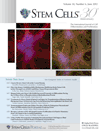
STEM CELLS
Unveiling the potential of stem cell science.STEM CELLS, published by Oxford University Press, is a leading academic journal dedicated to advancing the field of cell and developmental biology. With an impressive impact factor and ranking in the Q1 and Q2 quartiles across various disciplines, including Developmental Biology and Molecular Medicine, this journal serves as a critical platform for disseminating cutting-edge research findings from 1981 to the present. The journal's rigorous peer-review process ensures the highest quality of published content, making it an essential resource for researchers, healthcare professionals, and students interested in the latest breakthroughs in stem cell research and its applications. With a focus on innovative methodologies and holistic perspectives, STEM CELLS not only highlights significant discoveries but also fosters a collaborative exchange of ideas, driving forward the frontiers of science in regenerative medicine and developmental studies.

CYTOTECHNOLOGY
Elevating Science: Bridging Concepts and Applications in Cytotechnology.CYTOTECHNOLOGY, an esteemed journal published by Springer, stands as a vital resource in the fields of Bioengineering, Biomedical Engineering, and Biotechnology. With an impact factor reflective of its solid position within academia, this journal encompasses a broad scope dedicated to the advancement of cytotechnological research and applications from its inception in 1987 through to its latest volumes in 2024. Based in the Netherlands, it is committed to providing researchers, professionals, and students with high-quality, peer-reviewed articles that contribute to the understanding and innovations in cytotechnology. Although currently not open access, CYTOTECHNOLOGY has garnered a commendable reputation, holding Q3 rankings in multiple categories, indicating its relevance and influence within the scientific community. Researchers are encouraged to submit their cutting-edge findings to share insights that can spark further advancements in this dynamic field.
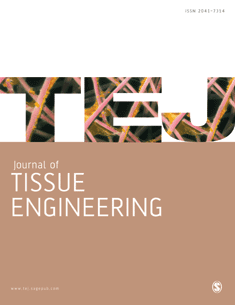
Journal of Tissue Engineering
Pioneering the Future of Regenerative MedicineThe Journal of Tissue Engineering, published by SAGE Publications Inc., stands at the forefront of innovation in the interdisciplinary fields of biomaterials and biomedical engineering. Established as an open access journal since 2010, it has quickly ascended to a leading position, as evidenced by its impressive rankings in 2023: Q1 in Biomaterials, Q1 in Biomedical Engineering, and Q1 in Medicine (miscellaneous). With a current impact factor that underscores its academic influence, this journal provides a vital platform for researchers, professionals, and students to share groundbreaking discoveries and advancements in tissue engineering and regenerative medicine. Located in the United Kingdom, the journal fosters a global dialogue with its robust publications and rigorous peer-review process, contributing significantly to the enhancement and understanding of complex biological systems. Join the esteemed community of thought leaders and innovators shaping the future of healthcare through the Journal of Tissue Engineering.
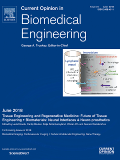
Current Opinion in Biomedical Engineering
Driving progress through critical assessments.Current Opinion in Biomedical Engineering is a renowned journal published by Elsevier, focusing on the cutting-edge developments and critical assessments in the fields of biomedical engineering and related disciplines. With an ISSN of 2468-4511, it provides a valuable platform for researchers and professionals to disseminate their insights and discoveries in areas such as bioengineering, biomaterials, and medicine. Its impressive impact factor positions it in the Q2 category for several fields, including Bioengineering and Biomedical Engineering, highlighting its influence and relevance in ongoing scientific dialogues. The journal’s unique format of opinion pieces and reviews encourages innovative thinking and fosters collaboration among experts. As an essential resource for those engaged in the life sciences and engineering, Current Opinion in Biomedical Engineering serves to stimulate discussion, promote knowledge exchange, and drive advancements in biomedical applications. Set in the Netherlands at Radarweg 29, 1043 NX Amsterdam, the journal is accessible through various academic platforms, enabling a global readership to engage with the latest scholarly work in this dynamic field.

Tissue Engineering and Regenerative Medicine
Exploring the Intersection of Engineering and MedicineTissue Engineering and Regenerative Medicine, published by the Korean Tissue Engineering Regenerative Medicine Society, is a distinguished journal focusing on the interdisciplinary fields of tissue engineering, regenerative medicine, and related biomedical innovations. With an ISSN of 1738-2696 and an E-ISSN of 2212-5469, this journal disseminates cutting-edge research and advancements pivotal to developing therapeutic strategies that improve tissue function and repair. As a testament to its scholarly impact, it holds a Q2 ranking in both Biomedical Engineering and Medicine (miscellaneous) categories, reflecting its influence and relevance within the scientific community, particularly with a Scopus rank placing it in the 82nd percentile among similar journals. Although the journal does not offer open access, it provides vital insights and knowledge to researchers, professionals, and students involved in the quest for innovative solutions in medical science and engineering. With its convergence years extending from 2008 to 2024, the journal continues to be an essential platform for the dissemination of high-quality research that drives the field forward.
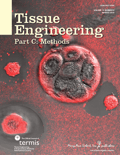
Tissue Engineering Part C-Methods
Advancing the Frontiers of Tissue Engineering MethodologiesTissue Engineering Part C: Methods is a prestigious academic journal published by MARY ANN LIEBERT, INC, specializing in the dynamic and rapidly evolving fields of bioengineering and biomedical engineering. With an ISSN of 1937-3384 and E-ISSN 1937-3392, this journal provides a platform for the dissemination of cutting-edge research from 2008 to 2024, showcasing methodologies that advance the science of tissue engineering. Ranked in the second and third quartiles across several categories in 2023, including a notable Q2 in Biomedical Engineering, the journal is recognized for its contributions to the interface of biology and engineering. Additionally, it holds commendable Scopus ranks that highlight its influence and reach within the scientific community. Although it does not offer open access, the journal remains vital for researchers, professionals, and students seeking insightful articles that bridge the gap between theoretical research and practical application in tissues and regenerative medicine. With its rigorous peer-review process and commitment to quality, Tissue Engineering Part C: Methods continues to be an essential resource for those at the forefront of tissue engineering innovations.
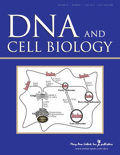
DNA AND CELL BIOLOGY
Advancing Knowledge in Cell and Genetic SciencesDNA AND CELL BIOLOGY, published by Mary Ann Liebert, Inc, is a distinguished journal in the realms of cell biology, genetics, and molecular biology, holding a notable position in its Q3 and Q2 quartile rankings across multiple academic categories as of 2023. With an ISSN of 1044-5498 and an E-ISSN of 1557-7430, this journal has been a pivotal platform for the dissemination of cutting-edge research since its inception in 1990, extending its coverage through 2024. Situated in the United States, the journal offers high-quality peer-reviewed articles, exploring significant advancements in biological sciences while fostering interdisciplinary collaborations within the research community. Though it currently does not offer open access, subscribed institutions and individual readers benefit from its rich repository of knowledge. The journal's rigorous standards and impactful content make it an essential resource for researchers, professionals, and students alike, aiming to stay at the forefront of discoveries influencing DNA and cellular dynamics.

Current Stem Cell Research & Therapy
Cultivating Knowledge in Stem Cell ApplicationsCurrent Stem Cell Research & Therapy, published by Bentham Science Publishers Ltd, is a leading journal dedicated to advancing the field of stem cell research. With an ISSN of 1574-888X and an E-ISSN of 2212-3946, this journal has been a valuable resource since its inception in 2006 and continues to broaden its scope through 2024. Recognized in the Q2 quartile for Medicine (miscellaneous) and ranked in the 66th percentile among its peers, the journal plays a crucial role in disseminating high-quality, peer-reviewed research that explores both the therapeutic and biological implications of stem cells. Located in the United Arab Emirates, Current Stem Cell Research & Therapy embraces a global audience of researchers, professionals, and students, providing a vibrant platform for discourse and innovation. While the journal offers subscription-based access, it remains committed to enhancing the scientific community's understanding of stem cell therapy and its applications across various medical fields.

Cells
Connecting Scientists to the Latest in Cellular DiscoveriesCells, published by MDPI in Switzerland, is a leading open-access journal that has been disseminating groundbreaking research in the fields of Biochemistry, Genetics, and Molecular Biology since its inception in 2011. With an impressive E-ISSN of 2073-4409, the journal boasts a strong impact factor and ranks in the 84th percentile for Scopus ratings, underscoring its significance in advancing scientific knowledge. As a Q1-ranked journal in both 2023 and 2020, it serves as a premier platform for researchers, professionals, and students eager to explore innovative findings and methodologies. By providing unrestricted access to high-quality research, Cells plays a pivotal role in facilitating collaboration and inspiration within the global scientific community, making it an indispensable resource for anyone interested in cutting-edge discoveries in cellular biology.